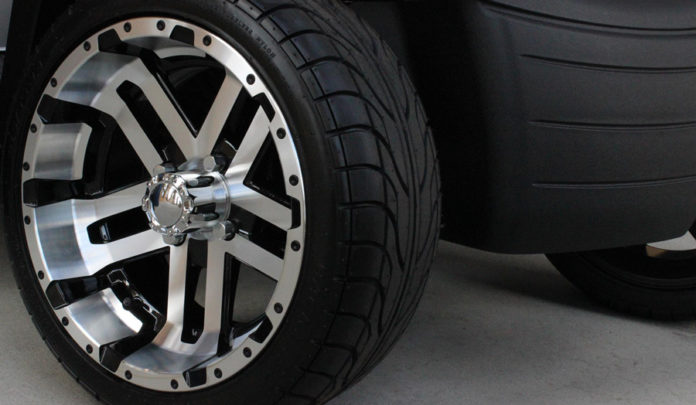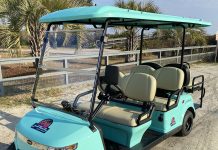
Like almost any choice when it comes to your golf cart, the best choice for tires depends on your individual situation, which includes mundane questions like your location, driving habits and how much you want to spend.
The difference between Radial Tires and Nylon-ply tires
Among the basic questions you should be prepared to answer is whether or not you want radial tires or nylon-ply tires (also called bias ply tires).
The differences between the two, when it comes to golf carts, has more to do with price than anything else. Golf carts are not dragsters that need to get every lick of speed they can out of a quarter mile sprint. And they are not tractor trailers that demand a return on the investment.
It is worth understanding the differences between nylon-ply and radial tires though because they do apply to your individual situation – and the difference is in construction.
Nylon-ply tires are using the word “ply” just as they do in toilet paper commercials. “Ply” means “strands, folds or thickness” but industry uses the word to mean “layers,” specifically if they are twisted together. As such, for a nylon-ply tire, picture a donut that you wrap up with an ace bandage. The first layer you wrap up with the slant to the left and the next with the slant to the right, so that it becomes stronger, yet retains flexibility, similar, for example, to ply-wood, where the layers of the composite are put together with the wood grain going in different directions with each layer.
Under the rubber, a radial tire is, on the other hand, comprised of cables that also run in different directions, forming a cross-stitch pattern, but the layers here have a different effect. In nylon tires, the layers retain their flexibility and, therefore, make tires that act like cushions. The corded layers of cables in a radial tire does the opposite. It makes a tire that is stiffer, which makes it better for wet or snowy weather, and hot weather, too, given it is more durable.
DEALER LOCATOR: Find a Golf Cart Dealer Near You
Having said that, durable, it turns out, is situational. For off-road uses, such as meandering around a golf course, a nylon tire with more flexibility could hold up better than a stiff radial tire.
So, what kind of Tires do I need for my Golf Cart?
All that said, the first question you need to answer when purchasing new tires is based on where the tire will see the most use, the answer to which will determine what style of tire you buy.
What you see on most golf carts is a combination tire that is suitable for roads and golf course travel. The treads on these tires handle water fairly well, but they are designed to make sure the tread does not leave teeth marks in your local golf course. These tires, consequently, are smooth riders with relatively smooth tread.
For those with carry-all type vehicles, especially those that travel off roads on back-acres or on muddy, slick, or rocky terrain, you should be shopping for off-road tires, often called knobby tires, because they have heavy duty tread patterns with better gripping power than a street tire.
The all-terrain tire is the final choice for a style, suitable for the widest variety of uses. All terrain tires are suitable for golf courses and the back forty, as well as streets, beaches and other options.
The deciding factor, when it comes down to it, is often a question of comfort. A nylon-ply golf course tire will theoretically provide the most comfortable ride, while a knobby radial tire would provide the least comfortable ride. Sometimes the decision boils down to that, to thinking about the person in the passenger seat, not just the person behind the wheel.







